In 1981, the first report appeared on a Geophagus species imported as by-catch, which the author, Rainer Stawikowski, initially referred to as the “Yellow Cheek-Stripe Eartheater“. The relatively slender species is very much out of the usual range of Geophagus, both physically and in terms of brood care behavior. Nevertheless, it took until 1992 for the species to be scientifically named Geophagus taeniopareius. The type locality is the Rio Orinoco, Raurales de Atures (rapids), east bank, state of Amazonas, Venezuela. The species is widespread in the Orinoco catchment area of both Colombia and Venezuela, but, as can be seen from its late discovery, is rarely caught in fishermen’s nets.
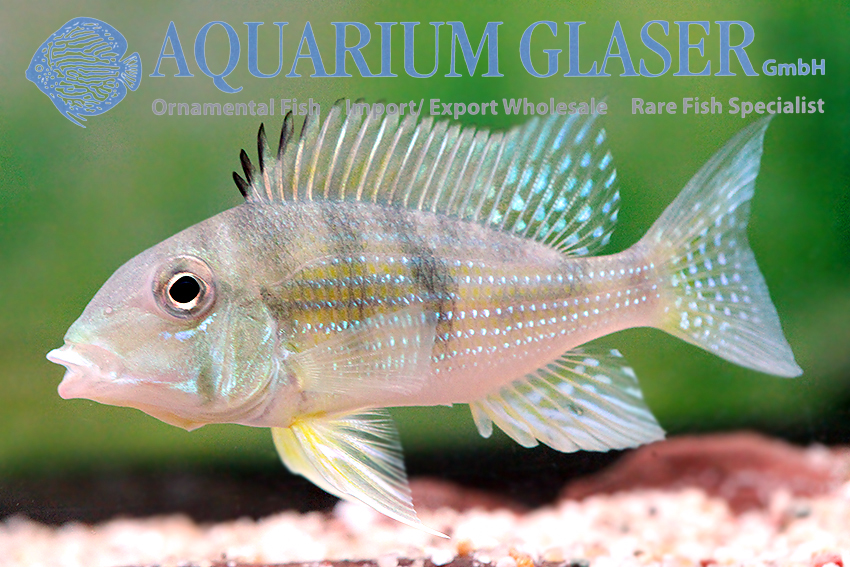
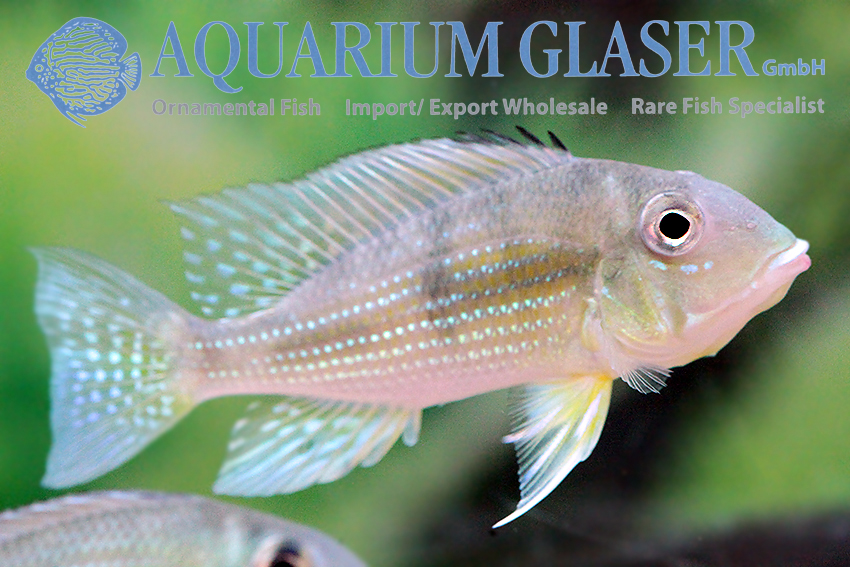
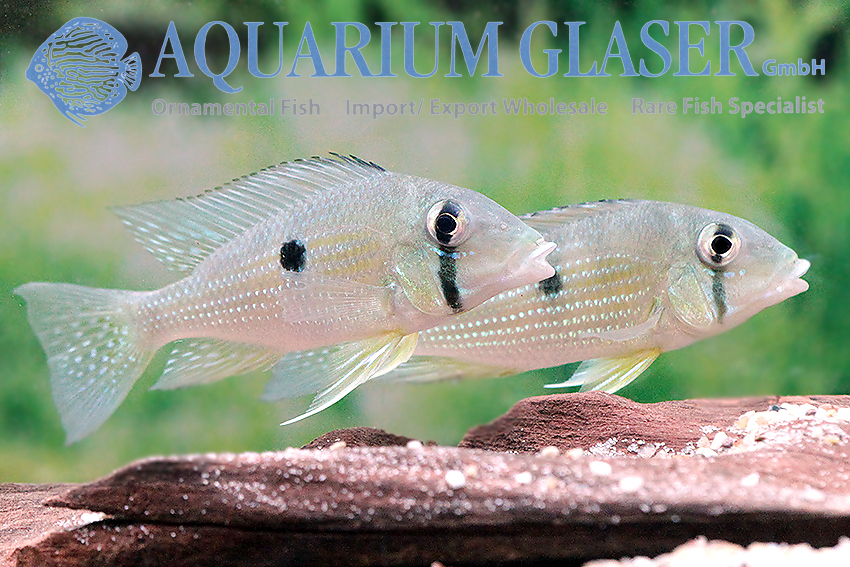
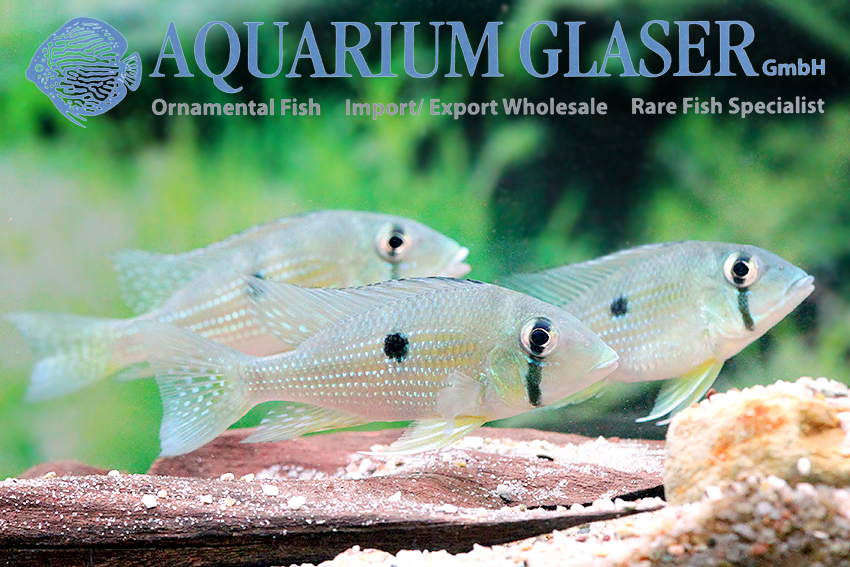
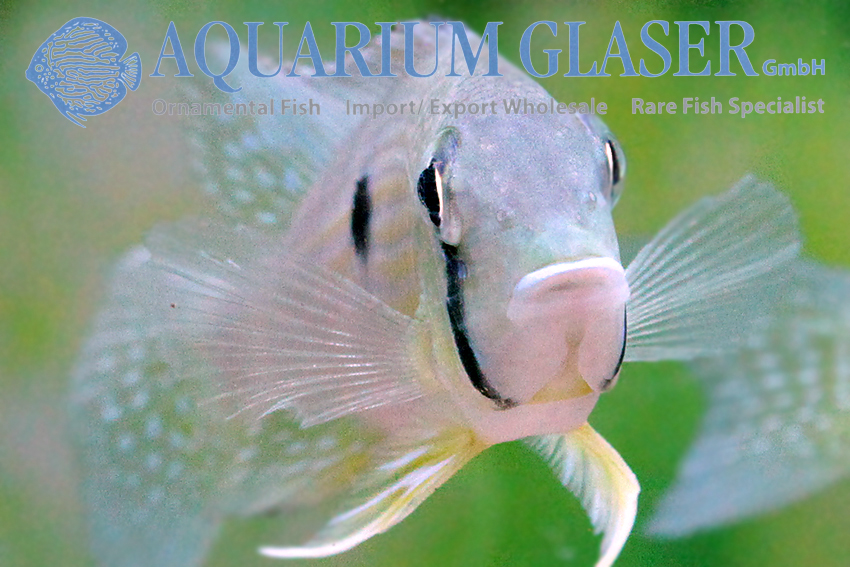
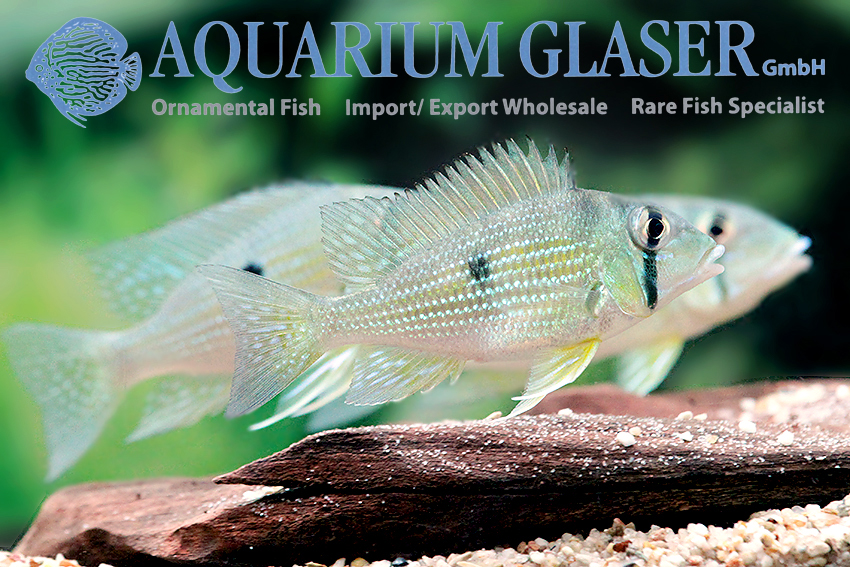
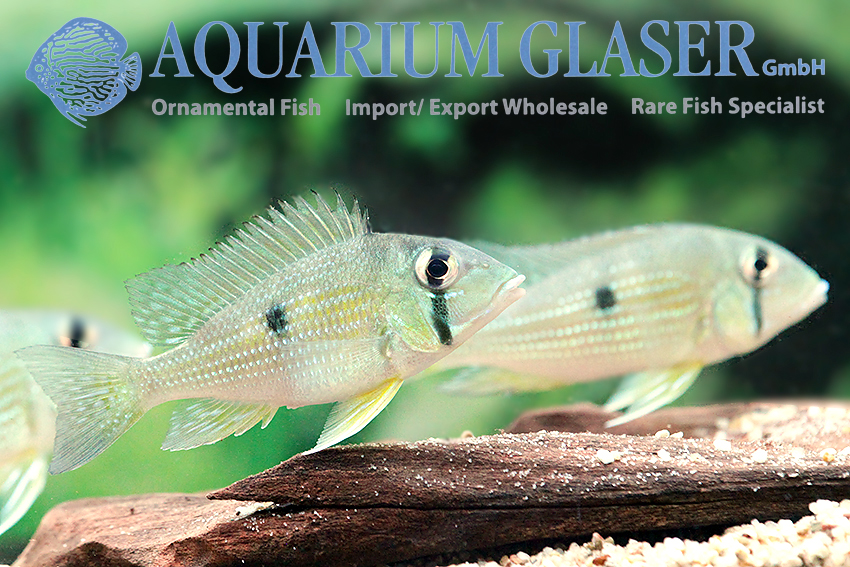
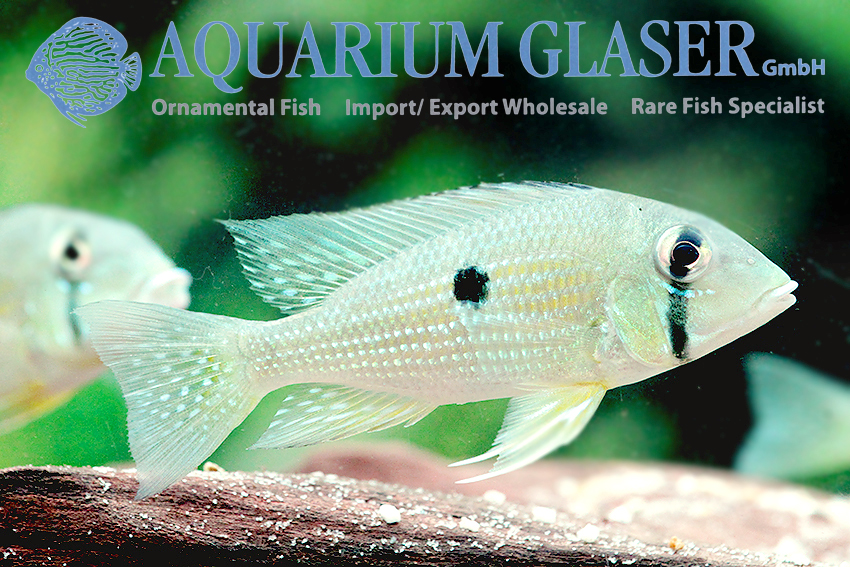
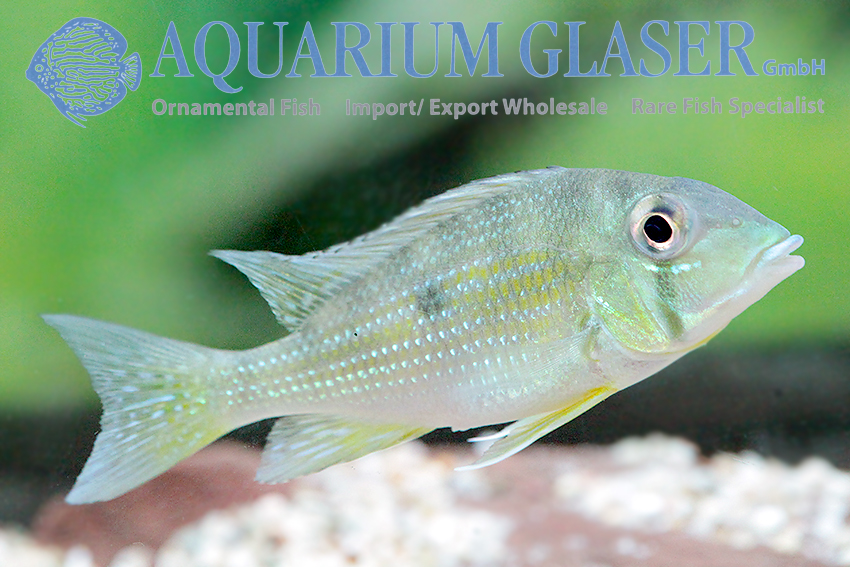
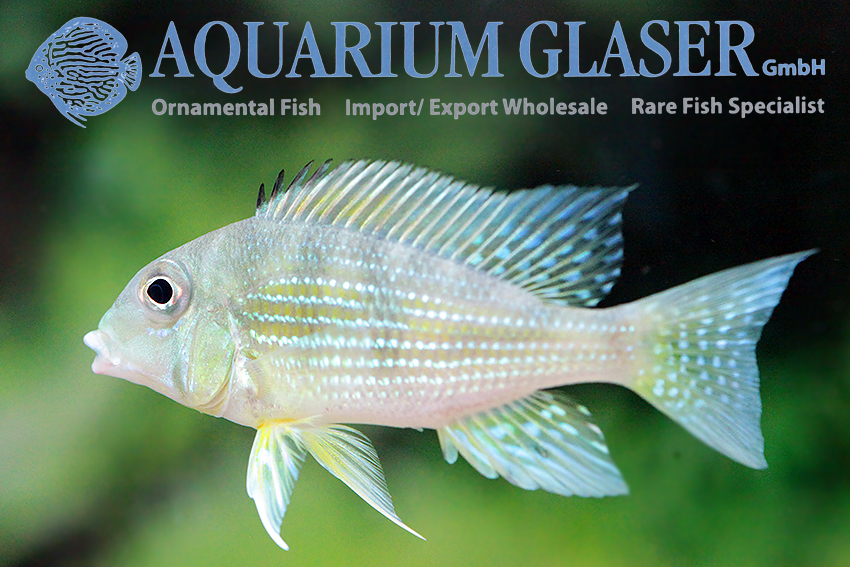
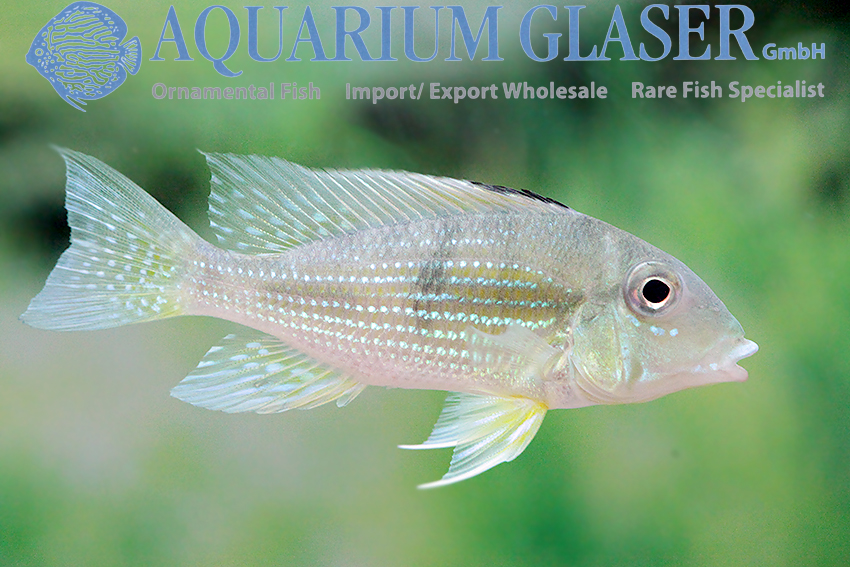
We currently have beautiful wild catches of the species from Colombia in stock. The fish are currently 6-8 cm in size and fully sexually mature. Males have longer pelvic fins and a much slimmer belly than the females. The maximum length of G. taeniopareius is approx. 15 cm. In contrast to most other Geophagus in the region, where mouthbrooding behavior is the rule, G. taeniopareius are open breeders, meaning they spawn similarly to Cichlasoma and Aequidens relatives. However, the Geophagus are more likely to be classified as agam, i.e. “husbandless”, as they do not form a close pair bond. Once both parents have finished caring for their brood, they spawn the next time with any other partner.
What is particularly striking about this species is its restless, very elegant swimming style and peacefulness. Territorial males do hunt fiercely, but always without consequences, i.e. there are never any bites.
For our customers: the animals have code 682102 on our stocklist. Please note that we only supply the wholesale trade.
Text & photos: Frank Schäfer




